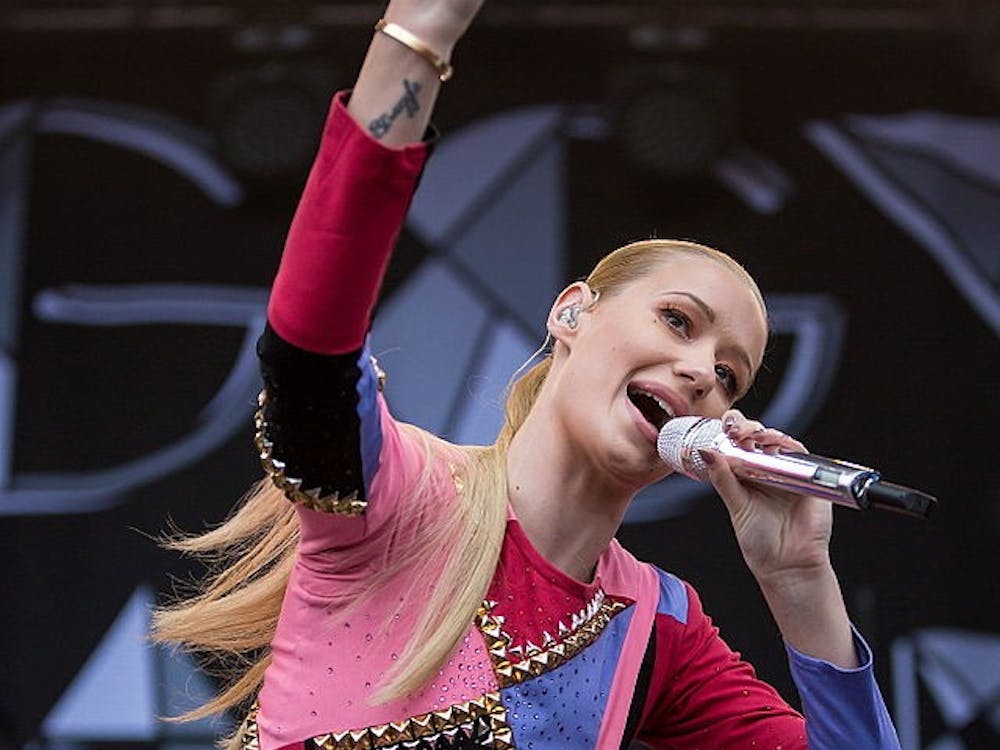In "Among School Children," one of his most iconic poems, Irish poet William Butler Yeats asks, "O body swayed to music, O brightening glance/ How can we know the dancer from the dance?"
Though Yeats posed his question in 1928, artists today are still unraveling the answer. Drawing inspiration for its title from Yeats' poem, "The Dancer and the Dance: Prints, Drawings, and Photographs," the fall exhibition at the University Art Museum, explores the body in motion through a variety of media.
Volunteer Curator Stephen Marguiles pulled from the museum's permanent collection as well as a private collection, drawing together pieces which cross genres, centuries and media. The works presented include engraving prints, sculpture and watercolor paintings, among others.
"The images on the wall stimulate the viewer to realize that dance only seems to be ephemeral and brief," Margulies said in an email. "That is why a show of supposedly static images is valid: to show that the dancer and the dance become one in order to write a poem, inscribe a drawing, create a vector or trajectory through time and space."
The concepts of time and space are central to the exhibition. Occupying just a one-room space, the proximity of the exhibition's pieces suggests a continuity which might seem fabricated at first glance. Consider, for example, the fact that the pieces cover five centuries of art, ranging from a 1588 engraving by Flemish artist Jan Sadler I to a 1968 photograph by Charlottesville native Edwin Roseberry. For the average viewer, transitioning from 16th century Europe to Roseberry's photograph of a fraternity house party may be jarring. For Margulies, however, this juxtaposition is key to the realization that "dance is the first art form out of which all of our rich art flows," he said. "Five centuries of art show that the dancer moves through the centuries, not just through an hour during the time of her dance."
The exhibition includes pieces from seminal artists like Pablo Picasso, Henri Matisse and Man Ray. One of Marguiles' favorites, however, is a "magical collaboration" between a Charlottesville couple, English Prof. and poet Gregory Orr and painter Trisha Orr. The piece, titled "To Be Alive," comes from a series of "poem-paintings" which inscribe the lyricality of Gregory Orr's poetry within the textuality of Trisha Orr's work.
"This wonderful lithograph shows how dance is light and shadow and line - pure pattern - but also heart and soul and music," Marguiles said.
For Marguiles, the horizontal black and white lines of the Orr print tie it thematically to the work of dance photographer Barbara Morgan. Dominating one wall of the exhibition, the arrangement of Morgan's black-and-white photographs suggests the plasticity of dance and captures the kinetics of motion within encapsulated frames. Although all the photographs are worthy of careful consideration, Marguiles emphasized one particular photograph of modern dancer Martha Graham as the "essence of the risk and transcendence of dance." This 1940 photograph was taken during Graham's Emily Dickinson-inspired performance "Letter to the World."
"We have Barbara Morgan, the greatest of all dance photographers, working with Martha Graham, the greatest of modern dancers," Marguiles said. "[The photograph] only seems to freeze the dancer at the peak of ecstatic movement ... A dancer, like any artist or scientist, plays a risky but exhilarating game with gravity. Is she rising or falling? It is not clear. Often she leaps, levitates ... her body twists, collapses, folds and unfolds."
If the photograph suggests that Martha Graham is both dancer and dance, how then can we answer Yeats' timeless question? For Marguiles, the reply can never be simple. "The prints in the show give us many answers to Yeats' question," he said. "In some, the dancer is the dance. In others, the dance is the dancer."
"Dancer and the Dance: Prints, Drawings and Photographs" is on display at the University Art Museum until Dec. 23, 2011.






